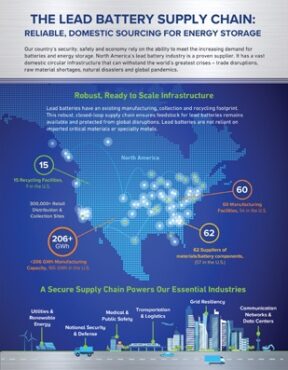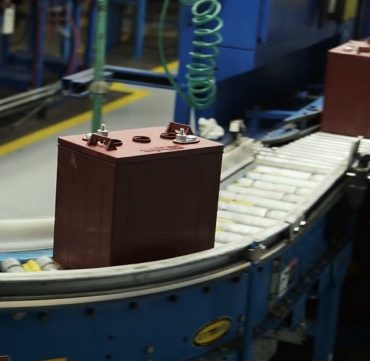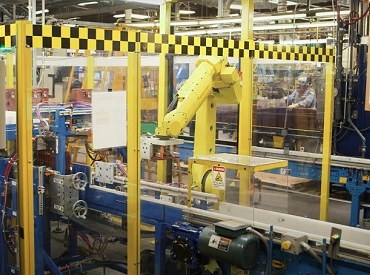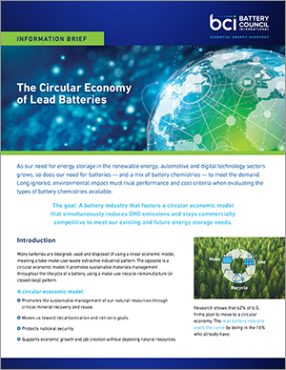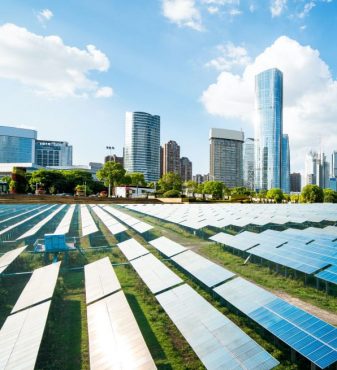
Guest blogger Dr. John Uhrie directs The Doe Run Company’s efforts to advance new technologies and acquire critical mineral resources. During 25 years of working with major mining companies, he has become a recognized technical expert in mining and metallurgy. Below, he explains the need for critical mineral resources and how to secure America’s supply chain.

Critical Mineral Resources Key to Achieve Low-Carbon, Renewable Energy Goals
Critical and base minerals, including those needed for lead batteries, are crucial to the United States’ ability to achieve a low-carbon and renewable energy future. Once the world’s top mineral producer, today, our nation relies 100% on foreign imports for 17 minerals and relies 50% or more on foreign imports for 46 non-fuel mineral commodities, 23 of which pose a significant supply risk to U.S. manufacturing.
Six-Fold Growth in Minerals Needed
Experts predict the mineral requirements necessary to reach net-zero carbon goals by 2050 may be six-times what is required today. Many of these minerals can be found in the U.S. but are processed elsewhere. These minerals are needed to produce more electric cars – EV sales are predicted to grow from 2M in 2021 to 31M in 2030 – and will enable the transition to more wind and solar renewable energy generation. Within the same time frame, energy storage needs will likely grow from 440 GWh to 1,300 GWh.
Challenges to Securing Domestic Access
If the U.S. is to regain its position as a leader in mineral extraction, processing and manufacturing, we need a paradigm shift to regulation, permitting, research and development. The current regulatory approach is stymieing innovation and promoting the export of raw materials only to have them processed under less stringent environmental standards.
The U.S. has the natural resources, technological wherewithal and human capital necessary to reduce the nation’s dependence of imported metals required for our electrification needs. Currently, inconsistent energy policies and a lack of coordination across regulatory agencies hinders the development and advancement of cutting edge, leapfrog technologies. Doe Run sees this firsthand with lead concentrates.
Produced in Missouri, lead concentrates are exported because the U.S. no longer has domestic access to primary lead processing. Although lead for U.S. lead battery manufacturing is largely sourced domestically, through recycling, without access to primary lead processing, the U.S. imports nearly one-third of the lead needed to produce batteries and other products. As a result, we are losing the economic value of producing the metal domestically. And, lead is not alone in this scenario. There are also no domestic primary smelters for zinc or nickel.
More Cooperation Between Industry and Regulators
Doe Run has novel lead metal processing technologies in development for both primary and secondary metal production that could be commercialized under the right conditions. Our hydromet technologies are capable of lead metal production with significant reduction of air emissions. We can also produce antimony and tin from recycled batteries and recover cobalt and nickel from complex concentrates. But we need better cooperation between industry and regulators to reduce the unpredictability and uncertainty that stifles investment in innovation.
Four Areas That Need Attention
There are four key areas of focus that can help the U.S. reclaim its position as a global leader in mineral extraction and processing:
- People: Investment in collegiate mining and metallurgy programs to train the next generation of the mining workforce.
- Permitting: Establish a clear, consistent and transparent path to the permitting of new mines and processing facilities, which currently takes up to 10 years, compared to just two years in Australia and Canada.
- Processing: Revitalize U.S. mineral processing and recycling.
- Permission: Redefine the industry’s relationship with regulators to work in greater collaboration toward sustainable mineral and metal production.
Lead Batteries Set Standard for Domestic Circular Economy
Doe Run’s six mines in the Viburnum Trend produce 5 million tons of ore a year, producing lead, copper and zinc concentrates. The company’s Resource Recycling facility, recycles approximately 8.5 million lead batteries each year, returning the metal to use in new batteries. Lead batteries are the most recycled consumer product in the world. They represent the standard for a circular economy product, with each lead battery produced containing more than 80% recycled materials.

With improved cooperation among stakeholders, increased research funding, and by following the circular economy example of lead batteries, the U.S. can regain domestic supply chain security and advance a low-carbon and renewable energy future.
For more information about Doe Run, visit The Doe Run Company.

